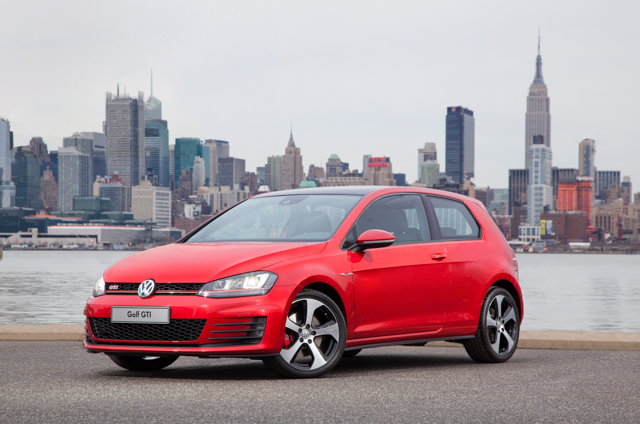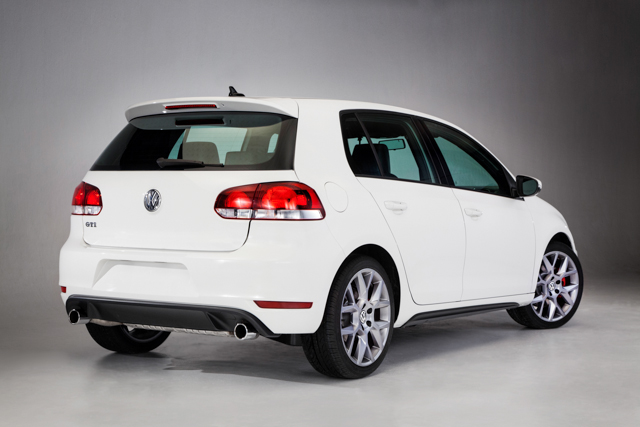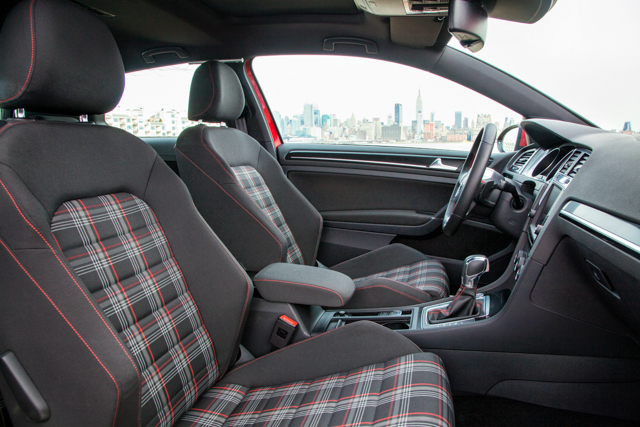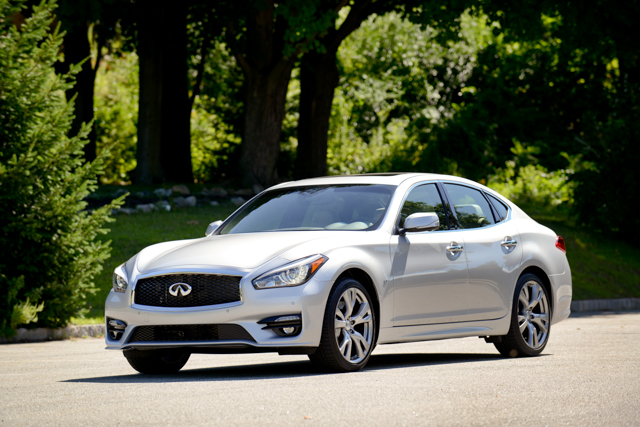Volkswagen’s GTI captured the hearts of a generation of young car enthusiasts in the early 1980s, thanks to a combination of entertaining performance, efficiency and urban practicality. Over the years, the car has grown up with the generation that adopted it, becoming more refined and larger over the years without losing the fun-to-drive element of its personality.
The GTI is so much larger, in fact, that these days a MINI Cooper is closer to the original Rabbit GTI than it is. VW has kept this car true to its enthusiast-pleasing roots, with nimble handling, a very responsive engine and even some utility. Considering the many changes and bar-raisings that have happened in the sport-compact market over the years, this evolution has been a good thing. 2014’s the last year for this generation GTI; next year Volkswagen’s subcompact sport is all new. I took a drive in the latest GTI, just to get a feel for how far it has come.
It may have gotten larger and more sophisticated, but the GTI I still puppy-dog eager when the rubber meets the road. The fully independent suspension uses struts with control arms up front and a multi-link rear, providing quick, light-feeling reflexes coupled with good communication. This is a car that wants to find a way around if it can’t get through, and its responsiveness is rewarding in traffic. It stops just short of being an edgy full-on sports car, so it’s sprung softly enough to live with on a daily basis. Further enhancing stability is the XDS Cross Differential System, which serves as a limited-slip differential. Big, 12.3-inch front disc brakes help to stop the GTI speedily.
This dynamic goodness is coupled with a 2.0 liter direct-injection turbocharged four-cylinder. The GTI makes 200 horsepower, and a flat torque output means that 207 pound-feet of torque is available in all gears. The GTI isn’t a neck-snapping sports car, but then neither was the original. The engine provides power when it’s needed, and pulls hard from rolling downshifts. The GTI rewards finesse in a way that makes it a very satisfying car to drive. A choice of six-speed manual or DSG dual-clutch automatic transmissions is available. The manual transmission provides strong and firm shifts, while the DSG is still one of the most fun-to-drive manumatics available. Launch Control is also available.
At a glance, the styling has always been the same: this is the Golf with the big wheels. The GTI’s eighteen-inch rims are distinctive enough to make it immediately recognizable. There’s a bit more to the GTI than that, however. The Golf’s one-box hatchback styling is also augmented by a blackout honeycomb grille with red accent stripes and teardrop-shaped headlamps. The fenders are flared to accent the wheels, the taillights have smoked lenses, and an aerodynamic diffuser is a part of the rear bumper. Vertical halogen foglamps ride in the lower front fascia. A roof spoiler is also standard. For 2014, the GTI is available as a Wolfsburg Edition or a Driver’s Edition, both trim levels well-equipped to celebrate the coming of the next model.
On the inside, the GTI is set apart from the run of the mill Golf by a three-spoke flat-bottomed steering wheel, well-bolstered sport seats and an oversized tachometer. The upright seating and snug seats are comfortable, grippy without being so aggressive as to be uncomfortable for everyday use. Interior trim is determined by the model: the Wolfsburg Edition features the plaid cloth trim that was unique to the original GTI and red stitching, while the Driver’s Edition has black leather upholstery. Heated seats are standard in both models, along with brushed-metal trim.
The GTI’s a staple of Volkswagen’s performance lineup, and it gets better with every incarnation. With its combination of entertaining performance and a versatile body style, the GTI is one of the more sensible enthusiast cars available. Pricing starts at $25,095 for the Wolfsburg Edition. The fully loaded Driver’s Edition, which adds a standard sunroof, navigation system and bi-Xenon headlights, starts at $29,695.








